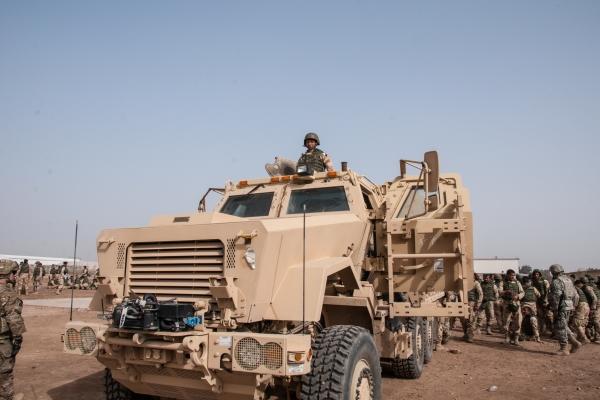The Defense Department organization set up to help troops detect and destroy improvised explosive devices (IEDs) in Iraq and Afghanistan will have a diminished role under an administrative “re-alignment” that will result in major cuts in funding and personnel, the Pentagon said Tuesday.
The Joint IED Defeat Organization (JIEDDO), which was a field agency reporting directly to the Deputy Defense Secretary, will transition to becoming a combat support agency under the authority of the undersecretary of Defense for Acquisition.
JIEDDO’s roster of about 400 military and civilian staff and about 700 contract personnel was expected to be cut significantly. Col. Steve Warren, a Pentagon spokesman, did not specify how large a percentage of funding will be cut for JIEDDO. In addition, JIEDDO will also be getting a new name, but that hasn’t been decided, Warren said.
Deputy Defense Secretary Bob Work ordered the transition to a smaller organization with the goal of improving oversight and accountability, Warren said.
“The assessment was that as a field agency it was no longer required,” Warren said. “The war was over and essentially we needed to find a home for JIEDDO.”
JIEDDO began as the Army’s Counter-IED Task Force in 2003 under then-Brig. Gen. Joseph Votel, now head of the U.S. Special Operations Command, to counter the growing use of IEDs by the Taliban in Afghanistan and insurgents in Iraq.
In 2004, then-Deputy Defense Secretary Paul Wolfowitz changed the Army-led group into a joint IED task force reporting directly to him and in 2006 JIEDDO was created, with Army Gen. Montgomery Meigs as its first director.
The mission was to lead and coordinate “efforts to defeat IEDs as weapons of strategic influence" and the motto was “attack the network, defeat the device, train the force.’
Despite more than $19 billion spent on the effort, IEDs remained the leading cause of casualties for U.S. and coalition troops in Iraq and Afghanistan through the troop withdrawals.
From 2009-11, the U.S. military suffered a total of 14,627 casualties, according to the Pentagon’s Defense Casualty Analysis System and the icasualties.org website.
Of that total, 8,680, or 59 percent, were from IED explosions, based on JIEDDO data. The proportion of all U.S. casualties caused by IEDs continued to increase from 56 percent in 2009 to 63 percent in 2011.
The mixed results led to increasing criticism of JIEDDO. In 2012, the Government Accountability Office reported on rampant duplication and overlap between JIEDDO and other agencies within the Pentagon in focusing efforts on high-tech solutions with robotics and chemical sensors.
"From fiscal years 2006 through 2011, JIEDDO has received over $18 billion in funding. However, DOD has funded other counterIED efforts outside of JIEDDO, including $40 billion for Mine Resistant-Ambush Protected Vehicles (MRAPS),” the GAO said.
Last year, the House Armed Services Subcommittee on Tactical Air and Land Forces asked the Pentagon for a report on JIEDDO’s future to include how the agency could split up in a diminished role for the counter-IED effort.
-- Richard Sisk can be reached at Richard.Sisk@military.com






























